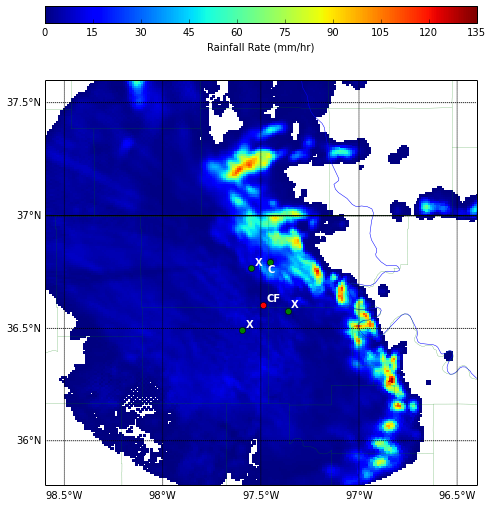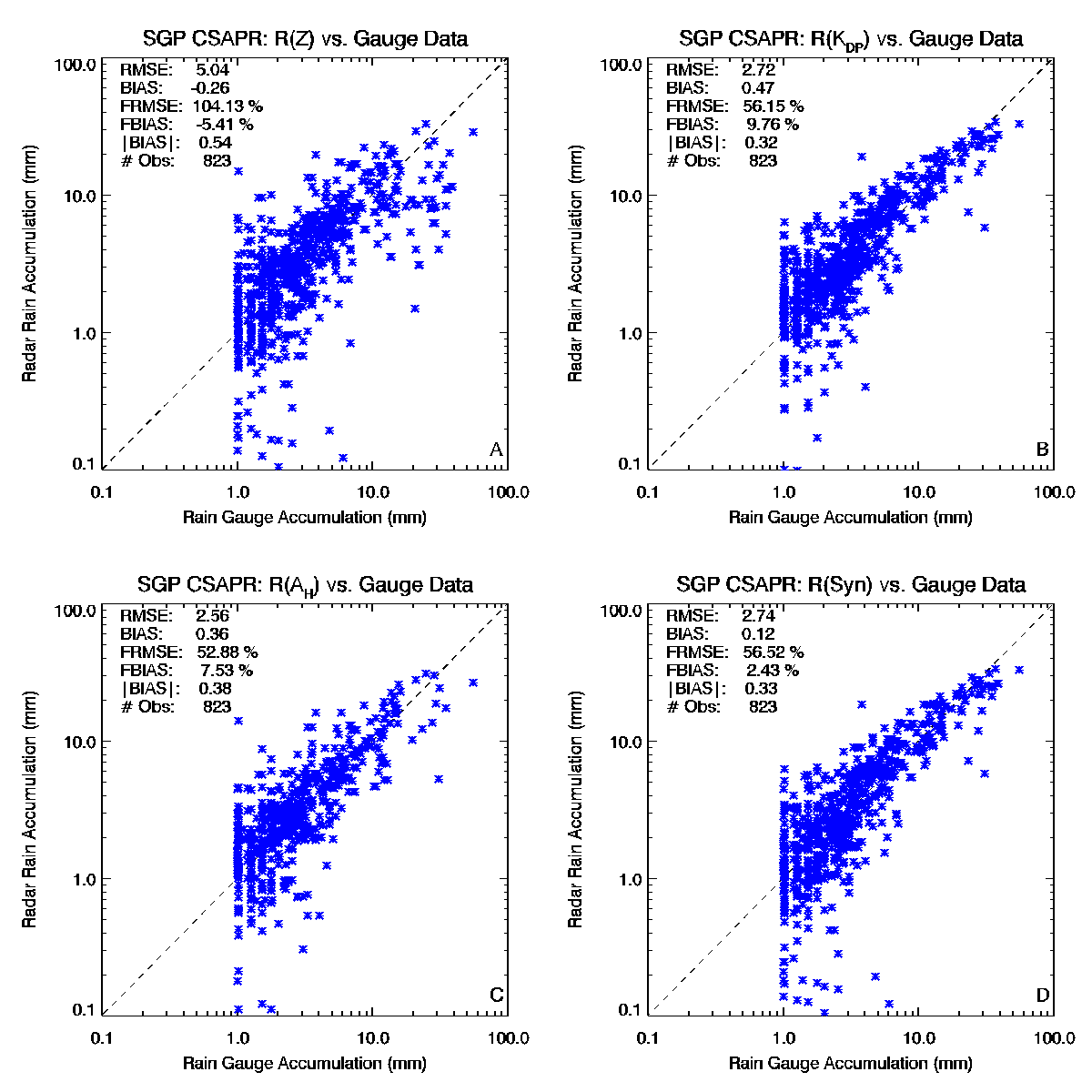Precipitation Estimation from the ARM Distributed Radar Network
Submitter:
Giangrande, Scott — Brookhaven National Laboratory
Area of research:
Cloud Processes
Journal Reference:
Science
Recently, the US Department of Energy's (DOE) Atmospheric Radiation Measurement (ARM) Climate Research Facility outfitted its fixed and mobile sites with scanning dual-polarized X/C-band weather radars. These systems are designed for improved observation of cloud and precipitation evolution, dynamic and microphysical processes and longer-term precipitation trends. An initial priority has been the development of a suite of hydrological analysis techniques and data products including radar quantitative precipitation estimation. The products are motivated by a demand for high-quality rainfall accumulation maps, which are used as a key constraint for ARM climate model forcing data sets and as an evaluation target for multiple scales of modeling.
Impact
This study documents the development of an initial set of ARM radar rainfall methods, using the wealth of radar resources surrounding the Southern Great Plains (SGP) facility near Lamont, Oklahoma. The study coincides with the joint Midlatitude Continental Convective Clouds Experiment (MC3E), a campaign funded by DOE's ARM Climate Research Facility and the National Aeronautics and Space Administration’s (NASA) Global Precipitation Measurement (GPM) mission. The MC3E campaign provided a unique backdrop for evaluating radar-rainfall methodologies at the ARM radar wavelengths that are shorter than the traditional WSR-88D radar. During this campaign, a suite of NASA GPM ground observations complemented the routine ARM observations and improved the ability to estimate rainfall variability and product uncertainty. Although these ARM radars operate at a shorter wavelength and are therefore susceptible to challenges such as attenuation in rain, the performance of several rainfall retrieval methods was comparable to estimates using nearby unattenuated WSR-88D observations. These results support confidence in ARM radar rainfall estimates when similar systems are deployed to remote global locations.
Summary
An ARM evaluation value-added product for several C-Band ARM Precipitation Radar (CSAPR) based estimates is now available. Radar processing codes used in this study are also available by accessing the open-source Python-ARM Radar Toolkit (Py-ART).



